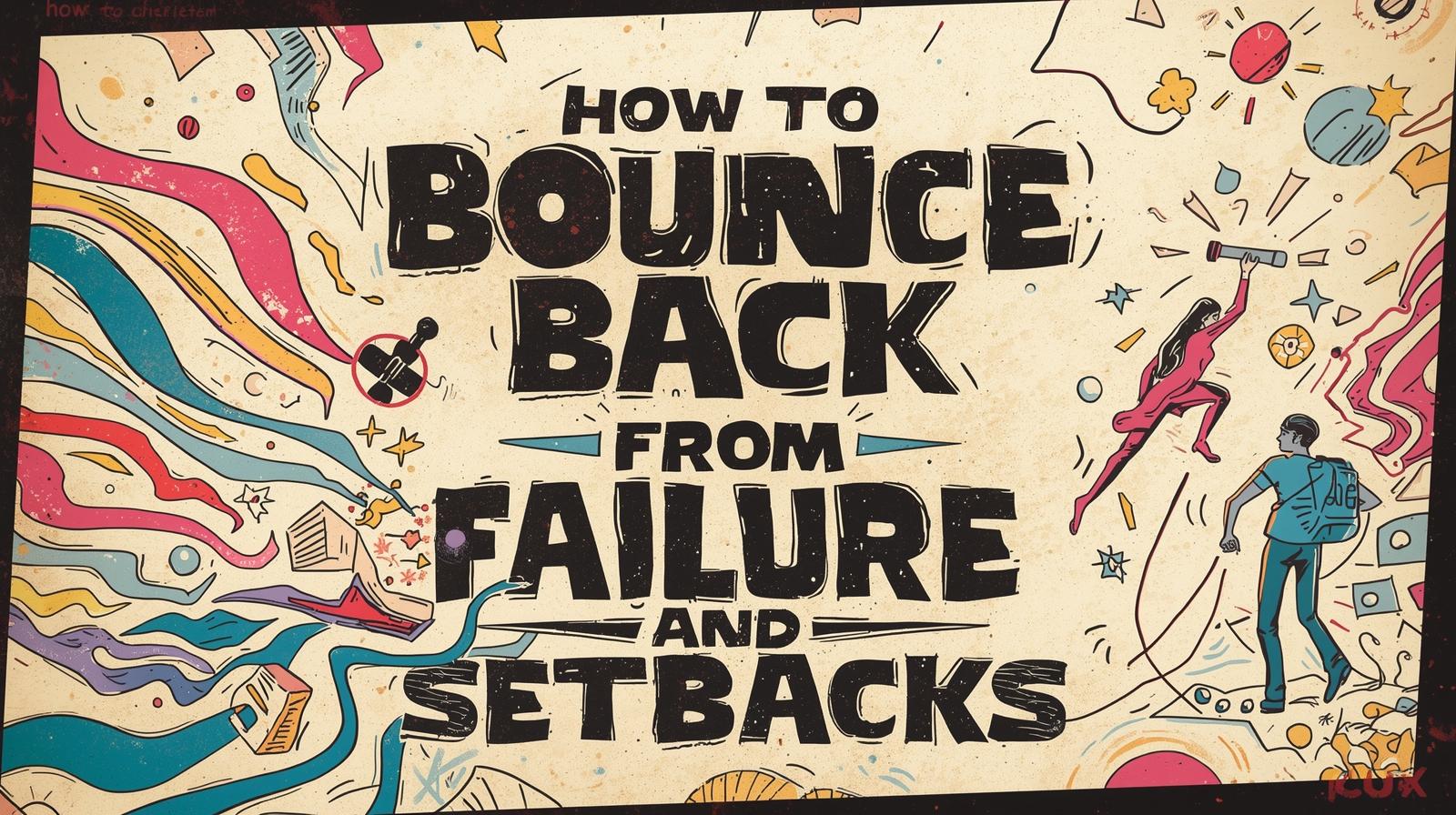How to Bounce Back from Failure and Setbacks

Sometimes you sabotage yourself — and if you caught the last episode, you’ll know exactly how that plays out. But other times, life just doesn’t care how hard you’ve worked. You try, you give your best, you genuinely put your heart into something… and it still falls apart in your hands.
You revise for weeks and still bomb the test.
You train every evening and still don’t make the team.
You put yourself out there, take a risk, and still get rejected.
That isn’t sabotage.
That’s a setback — the kind life throws at you without warning.
And if you’ve ever sat there wondering, “What’s the point of trying if I fail anyway?”, then this episode — and this blog — are exactly for you. Today we’re diving into why setbacks hurt more deeply than we like to admit, the three biggest mistakes people make when failure hits, and how to rebuild yourself in a way that leaves you stronger, not stuck.
Let’s break it down.
Want to listen on your preferred podcast app instead?
Why Failure Hurts So Much
Failure stings — and not just a bit. It stings like hell. But it’s not the result itself that cuts the deepest… it’s the meaning you attach to it.
You fail a test, and suddenly it isn’t “I didn’t get the grade I wanted,” it becomes “I’m stupid.”
You get rejected, and it shifts from “That didn’t work out,” to “I’m unloveable.”
You don’t make the team, and it becomes “I’m just not good enough.”
It stops being about the moment and becomes a verdict on who you are.
So stop here for just a second. Think about the last thing you failed at.
Did you treat it as one moment that went wrong?
Or did you stamp it across your identity like a label?
Three Traps People Fall Into After Failing
When life knocks you back, most people fall into one of three traps. You’ll probably recognise at least one of them.
1. The Disappearing Act
You vanish.
You dodge calls.
You avoid friends.
You stay in bed, and you tell yourself, “I just need to be alone.”
But isolation makes the story in your head louder, not quieter. And whatever sting the failure gave you, it grows in the dark.
2. The Hard Mask
You put on the “I don’t care” front.
You shrug.
You pretend it didn’t matter.
But you know it did.
That act doesn’t protect you — it just stops you from processing what happened.
3. The All-or-Nothing Spiral
You take one failure and turn it into a lifetime prophecy.
“I failed this exam, so I’ll fail every exam.”
“If I messed up here, I’ll mess up everywhere.”
You turn a moment into a destiny — and that’s how you trap yourself.
These three reactions feel protective in the short term, but every one of them blocks you from moving forwards.
Reframing Failure: Feedback, Not a Verdict
If you want to bounce back, you’ve got to rewrite the story you tell yourself about failure.
Athletes fail constantly. They miss shots, lose games, and mess up publicly. But they don’t turn those moments into proof that they’re hopeless. They turn them into data.
“What worked?”
“What didn’t?”
“What’s the plan for next time?”
Failure doesn’t mean you’re broken — it means you tried.
It means you cared.
It means you stepped into something that mattered to you.
So ask yourself this:
If I treated this as feedback instead of a verdict, what’s one lesson I could take from it?
Three Steps to Bounce Back Stronger
Here’s the gold. Bouncing back isn’t about pretending it didn’t hurt. It’s about rebuilding in a way that gives you momentum instead of misery.
1. Feel It. Don’t Fake It.
Failure hurts like a bitch.
Ignoring it or covering it with toxic positivity just forces you to carry it longer.
Let yourself feel it.
Cry if you need to.
Vent if you need to.
Write it out.
When you allow the emotion to move through you, it stops controlling you.
2. Shrink the Battlefield
After a setback, your brain wants to fix everything at once. Don’t.
Pick one small step you can win today.
Failed an exam?
Don’t launch into a five-hour revision marathon — just do ten minutes.
Had a fall-out?
Send one honest text — not an essay.
Small wins rebuild self-trust. That’s how you get your feet under you again.
3. Rewrite the Label
Failure isn’t you.
It’s not a personality trait.
It’s a moment — a single data point in a much bigger story.
Change the language from:
“I failed,”
to
“I learned what needs adjusting.”
Your brain listens to the words you use. If you rewrite the label, you rewrite the memory.
The Messy Middle: Where Real Growth Happens
There’s a part of the comeback story nobody talks about — the middle bit.
Everyone loves the dramatic failure and the triumphant comeback, but the messy middle? The part where you’re trying… and doubting… and trying again?
That part is brutal.
You study again, but the fear of failing again sits in your stomach.
You go back to training, but every missed shot makes you question everything.
You try to rebuild after a fallout, but it feels awkward and shaky.
This messy middle is where growth actually happens.
People think progress should feel smooth.
But the truth is:
If it feels awkward, heavy, or clumsy — that’s growth.
Think back to learning anything:
Your first time using a spoon → custard everywhere.
First driving lesson → stalled 20 times.
First job → messed up every day.
Awkwardness isn’t failure.
It’s your brain rewiring.
Bouncing back is about turning up in that messy middle over and over again — even when it feels uncomfortable.
Bringing It All Together
Failure hurts because we take it personally.
We isolate, pretend we don’t care, or spiral into “I’ll fail forever.”
But failure isn’t a verdict — it’s feedback.
Bouncing back means:
-
Feeling it honestly.
-
Shrinking the battlefield so you can build momentum.
-
Rewriting the label so failure becomes part of your learning, not part of your identity.
So here’s your challenge for this week:
Think of one recent failure or setback.
Name the trap you fell into — disappearing, masking, or spiralling.
Write down the lesson hiding in there.
Then take one small step forward. Just one.
Because failure isn’t the opposite of success — it’s part of it.
Every rejection, every stumble, every “not this time” is data you can use to build stronger foundations.
Failure doesn’t get the last word unless you give it one.
Next Episode: When Motivation Vanishes
Even after you start bouncing back, motivation doesn’t automatically return. Sometimes the setback knocks the spark clean out of you. You stop asking, “How do I recover?” and start asking, “What’s the point?”
And that’s where we’re heading next — finding motivation after you’ve lost it.
Because bouncing back is only half the battle.
Getting your drive back is the other half.
See you in the next episode.



